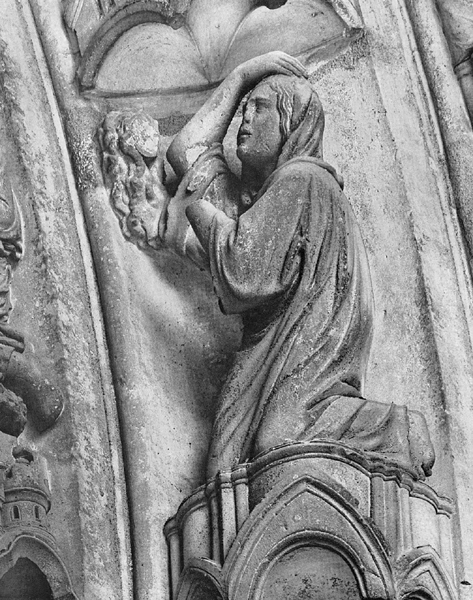Image Details

Gothic Sculpture in France, 1140–1270/Photo by Max Hirmer
“Oh god, my god, hear me!” (Judith 9:5), Judith cries out as she puts ashes on her head and prostrates herself. “For your strength does not depend on numbers, nor your might on the powerful, but you are the God of the lowly, helper of the oppressed, protector of the forsaken, savior of those without hope. Please, please, God of my father, God of the heritage of Israel, Lord of heaven and earth, Creator of the waters, King of all your creation, hear my prayer!” (Judith 9:11–12).
Throughout this lengthy prayer, uttered before leaving for Holofernes’s camp, Judith demonstrates her deep piety. She also presents herself as a symbol of the Jews (her name means the Jewess), who are suffering under Assyrian oppression.
This 13th-century sculpture appears above the north entrance to Chartres Cathedral. Although the Book of Judith was excluded from the Hebrew and Protestant Bibles, it is included in the deuterocanon (secondary canon) of the Roman Catholic Old Testament. In Roman Catholic tradition, Judith was likened to the Virgin Mary, partly because her townsman Uzziah praised Judith with the same words later used of Mary: “O daughter, you are blessed by the Most High God above all other women on earth” (Judith 13:18).
